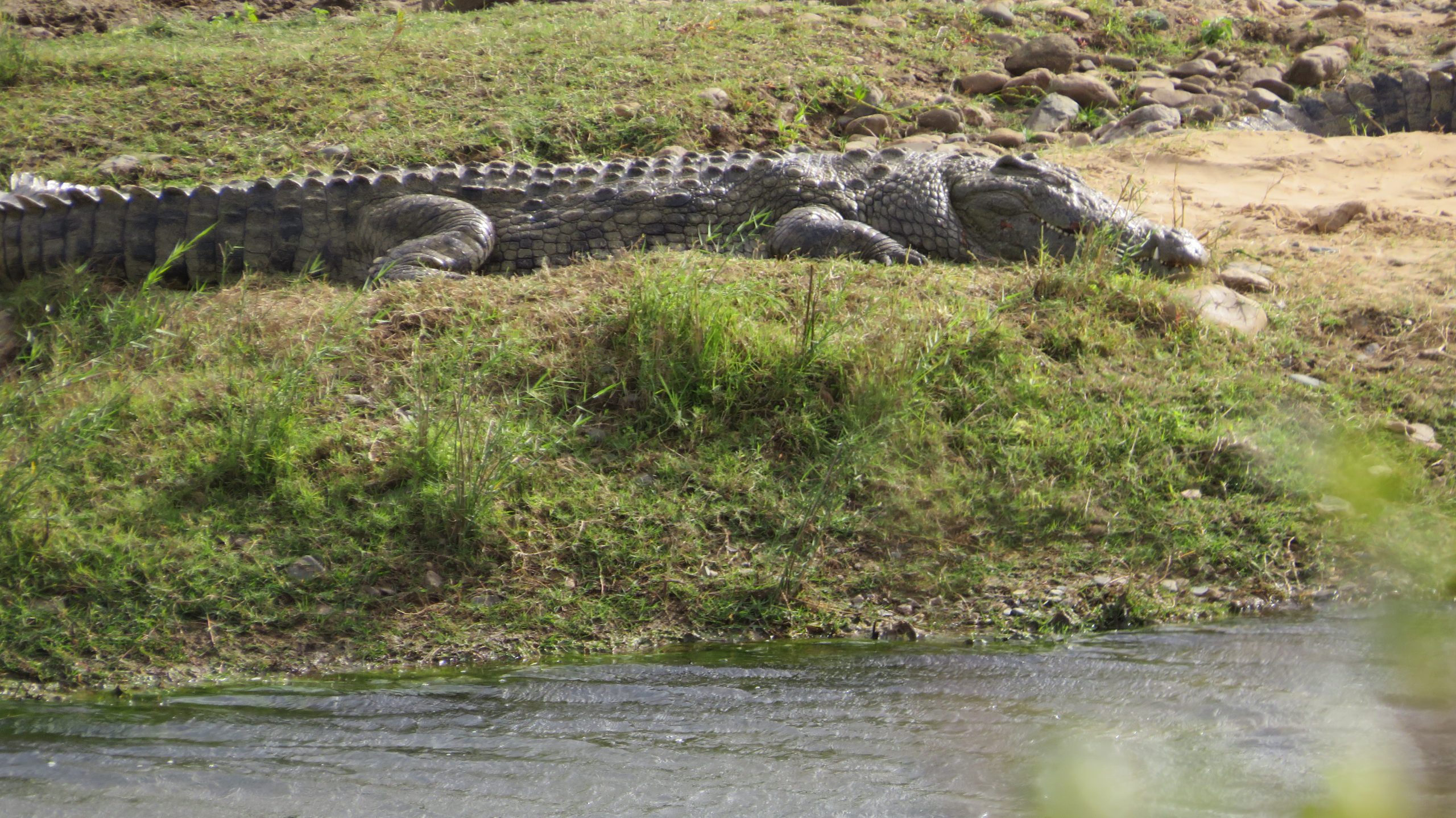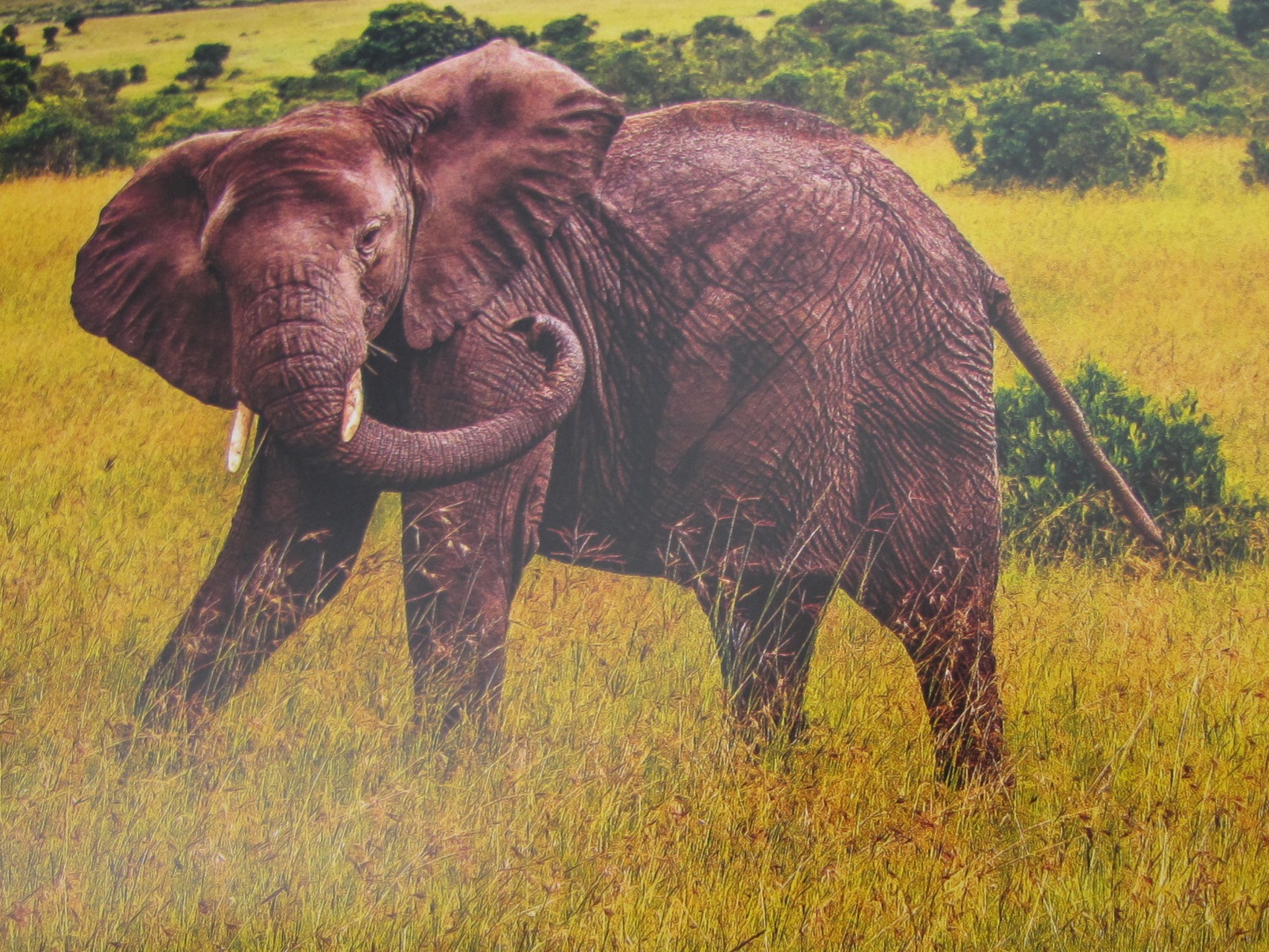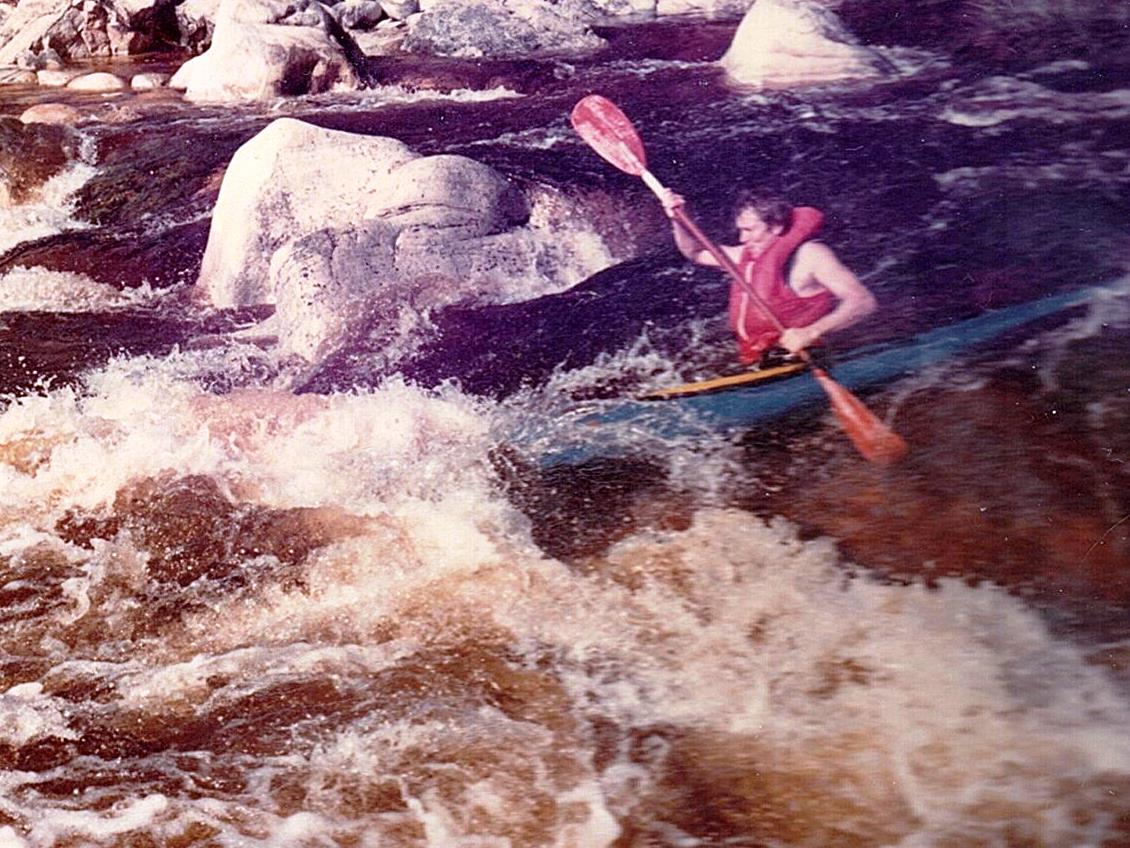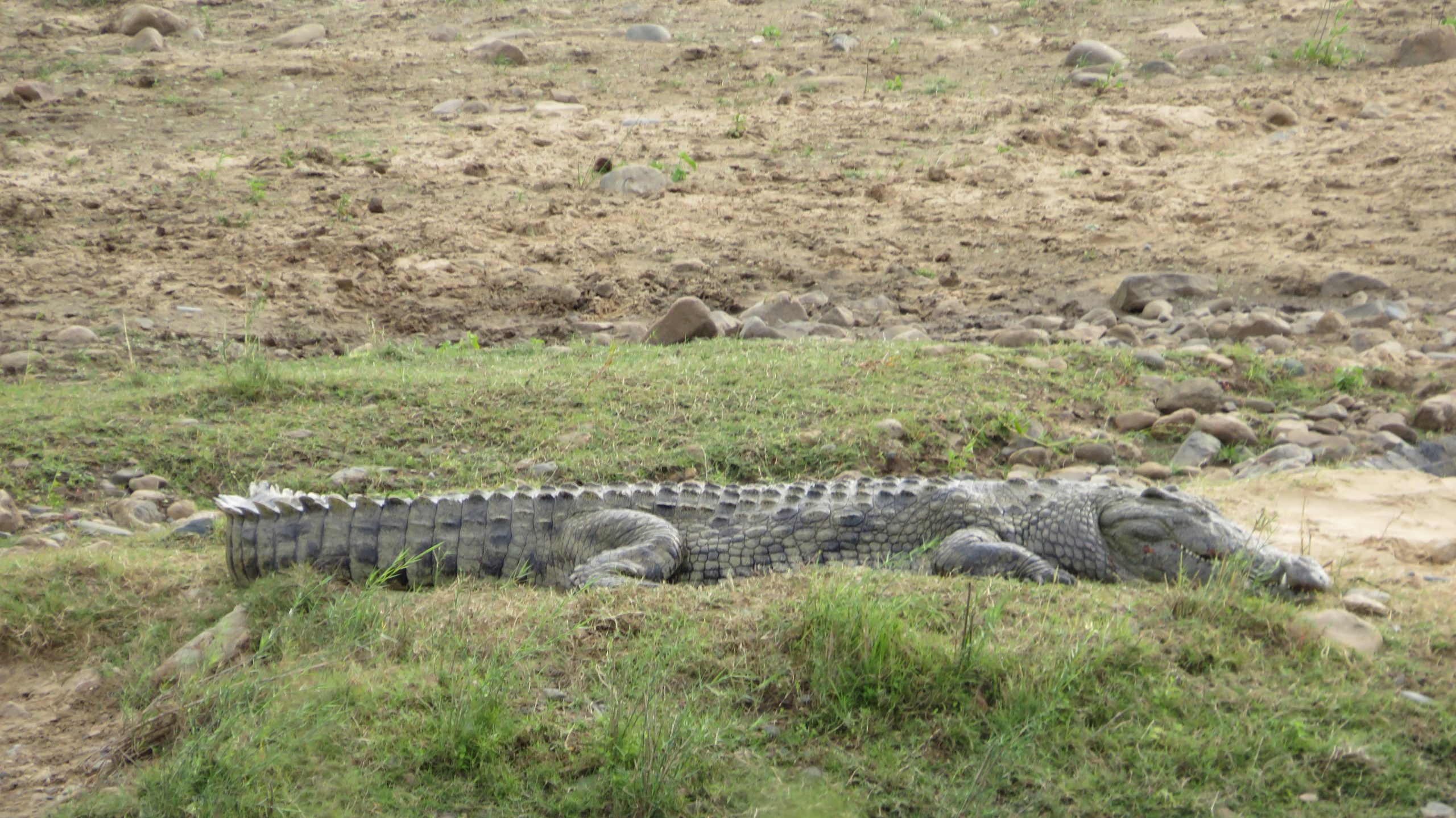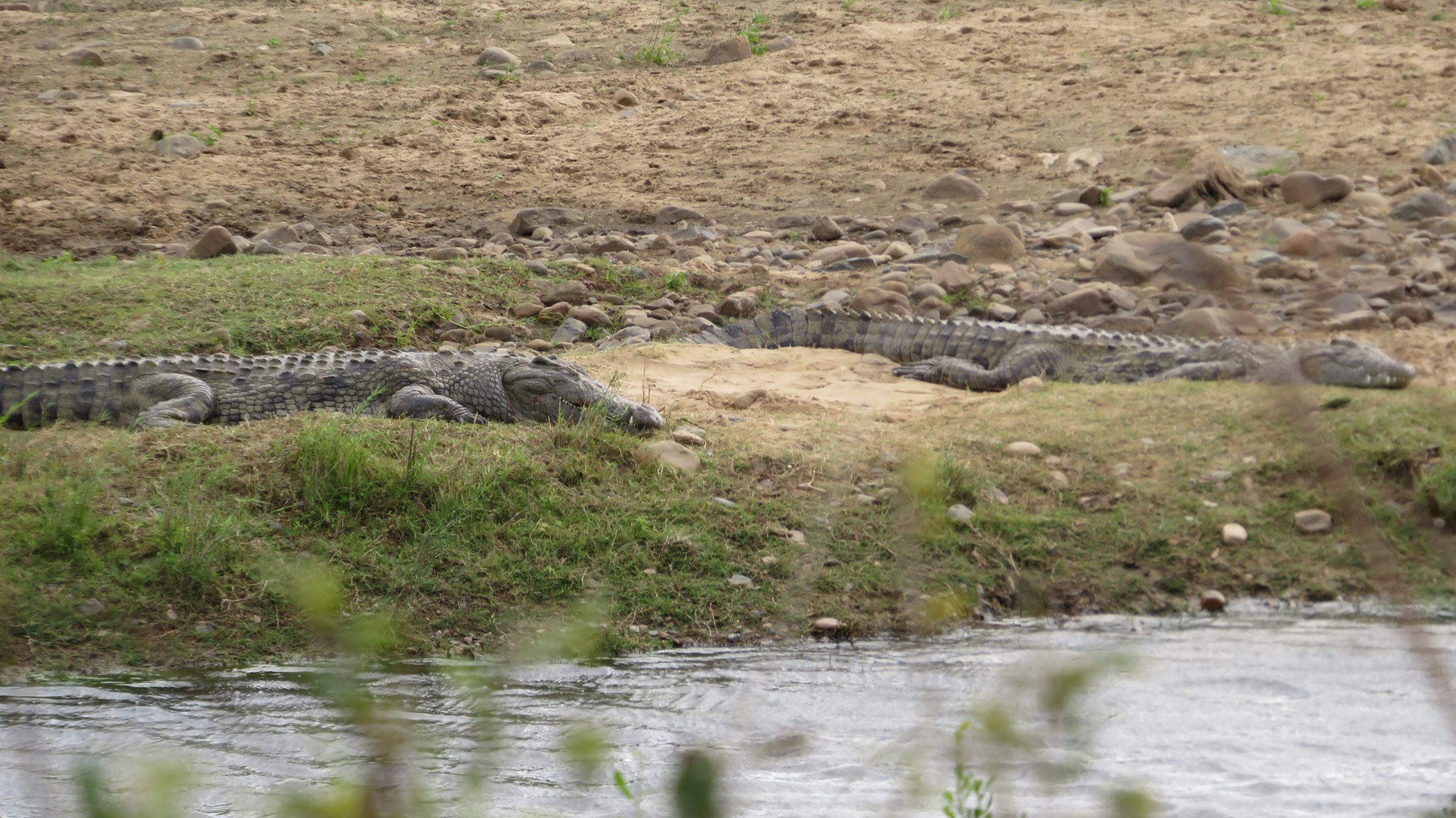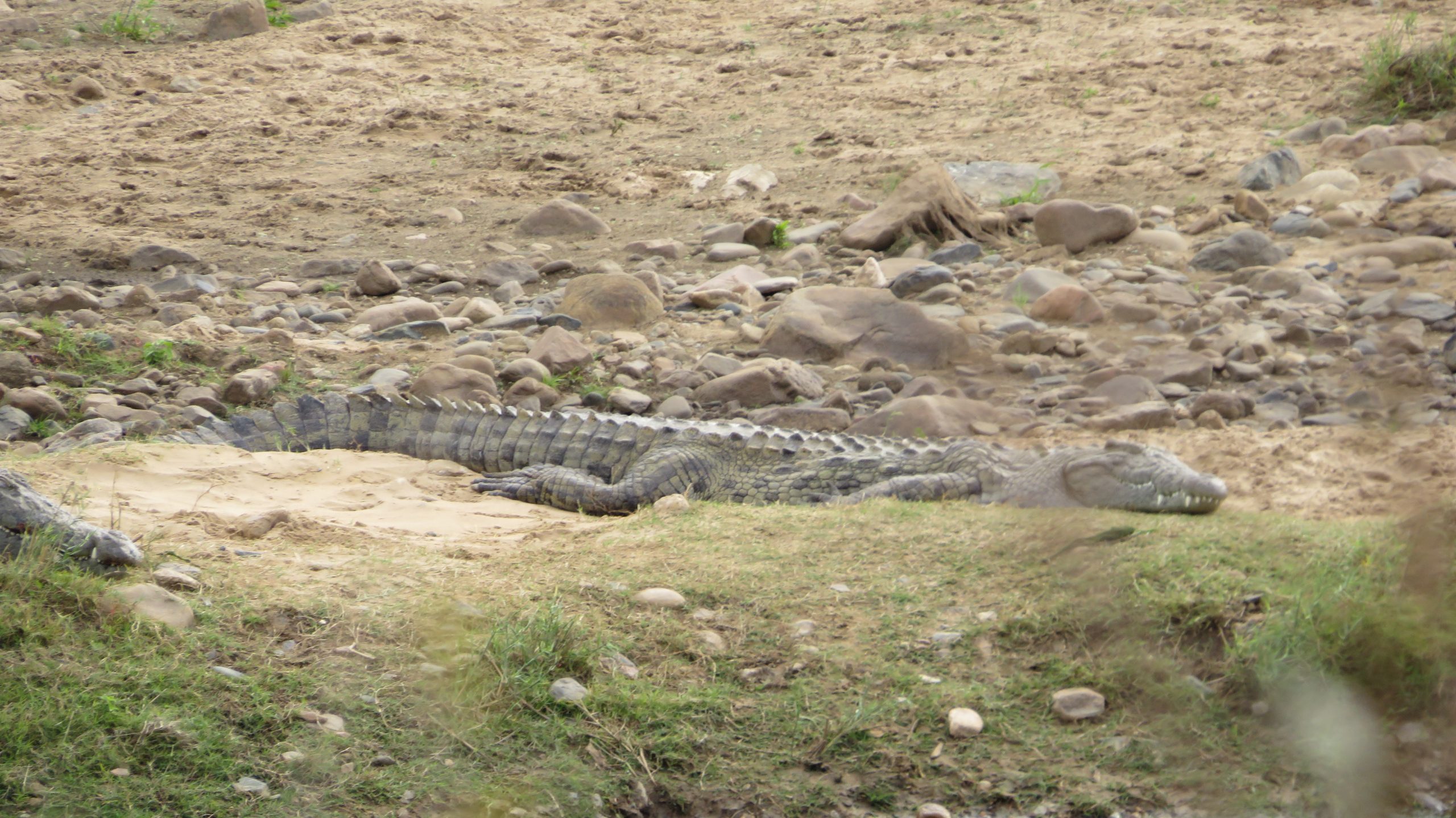Moreover, their leathery skin is thick and thus relatively impenetrable to any form of sharp instrument employed to defend oneself from a sudden and frightening attack!
In fact, it is this leathery skin of the crocodile that has multiple applications across the fashion industry such as use for bags, shoes, and upholstery after being farmed and treated in specialist farms and tanneries.
Also crocodile leather, the processed hide of crocodiles is an exotic leather which, as a group, makes up less than one percent of the world’s leather production, and, although it is rare compared to other hides such as sheep or cow and requires high levels of craftsmanship to prepare it for use, in the consumer industry, crocodile leather is considered a luxury item utilized by high fashion brands such as Hermes and Moet Hennessy Louis Vuitton and, even, Gucci!
As a crafted material, crocodile leather is rare and expensive because of limited numbers of crocodiles, their relatively small size and the scarcity of dependable farms and tanning facilities to process and prepare the product for market, and, as a result, crocodile skin is primarily used in the production of handbags and other luxury items such as shoes, belts, wallets, upholstery, and furniture.
For these products, the skin of the Freshwater, Saltwater, and the Nile as well as the Caiman species are employed because of the superior quality of skin which, once tanned, is hailed as an aesthetic finish.
Although not all these skins are valued the same, as one of the largest crocodile species in earth, the Australian Saltwater Crocodile has the, unfortunate for this species, reputation for yielding the most desirable and highest-quality hide and this renders it more sought after than the smaller Caiman skins which, as a more common species, has evolves as a less expensive option.
In fact, these largest living reptiles are found in tropical and subtropical regions around the world, including the United States, Mexico, Central and South America, Africa, Asia, Australia, New Zealand, Europe and the Middle East and, of interest, the American crocodile, Crocodylus acutus, lives in several places within the Americas, including Mexico, Central and South America, the Caribbean, and south Florida while the American alligator, Alligator mississippiensis, is also found in south Florida, among other places, although South Florida is the only place you can find both animals in the wild and to distinguish the two, alligators have a more U-shaped snout while crocodiles have a more pointed or V-shaped one and, in addition, alligators are black, while crocodiles are usually a lighter grayish brown.
As far the market for these skins is concerned, the value of a skin is dependent on what it will be used for. For example, the so-called ‘Freshwater Crocodile’, sourced, particularly, from New Guinea, is known for its flexibility which allows processors to skive it down to a suitable thinness for clothing whereas the Nile crocodile skin, mostly available across Africa, is durable, making it desirable for heavy-duty items such as footwear and belts.
As an extra defence, crocodiles are covered in non-overlapping scales, and they can employ their conical, peg-like teeth to engage in a powerful bite.
As for their hunting skills, crocodiles know that game and Man must come to water to replenish their bodies’ moisture reserves and, as such, they will lie, patiently, in wait near the tracks or the regular drinking places.
Crocodiles kill their prey by hunting it stealthily and stalking their prey from the camouflage of the water, and, once it has the unfortunate individual in its strong jaws, it will, relentlessly, right off their prey by snapping their necks or holding them underwater to drown, followed by dismembering them and breaking them into smaller readily edible anatomical sections!
Furthermore, by disorienting their prey, or making them dizzy so they cannot escape, they will also roll their prey over in the water, which makes it difficult for the prey to breathe and eventually leads to drowning.
Apparently a crocodile attack is a hundred times more deadly than a shark attack for humans, although, unlike sharks, who take a bite and wait for their prey to bleed out, crocodiles drag their prey to the depths and drown them and this means that if you’re attacked, you don’t have much time to fight off the croc.
Of course, the best way to defend oneself from a crocodile attack and to survive an encounter with a crocodile is to avoid the attack in the first place.
However, if you are faced with a crocodile in the wild, you should back up slowly, trying not to make rash movements that will draw its attention, and, then, turn and run as fast as you can in a straight line away from the reptile, especially if it does begin to head your way. Always remember that, despite their short legs, crocs can run at surprisingly high speeds of about ten miles per hour, or, approximately seventeen kilometres per hour.
Do your best to stay away from its jaws since a croc’s bite generates up to 3,700 pounds of pressure per square inch and they can crush a watermelon with what seems to be very little effort so you aren’t going to be able to pry its jaws apart if one is able to latch on to you!.
If you’re unfortunate enough to be grabbed by a crocodile, the first thing you should do is attack its eyes. Gouge at these vulnerable orbs with your fingers. With a little luck, the croc will release its hold and swim away. The ears and nose of the animal are also good targets to strike as they are sensitive.
In any event one should always be prepared to face the aptly named “death roll” as this is when a crocodile latches on to its prey and rolls in an attempt to both drown it and tear it to pieces. When this happens, do your best to roll in the same direction as the crocodile to prevent it from tearing off a limb, and, hopefully, the crocodile will expend such a great deal of energy that it will, likely, need to rest before rolling again and this is the prime time to do your best to fight back.
In fact, crocodiles are also known to use their tails to knock prey unsuspectedly coming down to drink into the water, where they can then drown them and the wily crocodile will sometimes wait patiently for their prey to come to the water’s edge to drink, at which point they will attack and summarily drown them!
Finally, hopefully, one will never need the tips provided here, but, as always, being ready to face the unthinkable is better than being caught unprepared. Martin Briggs briggsct@global.co.za


